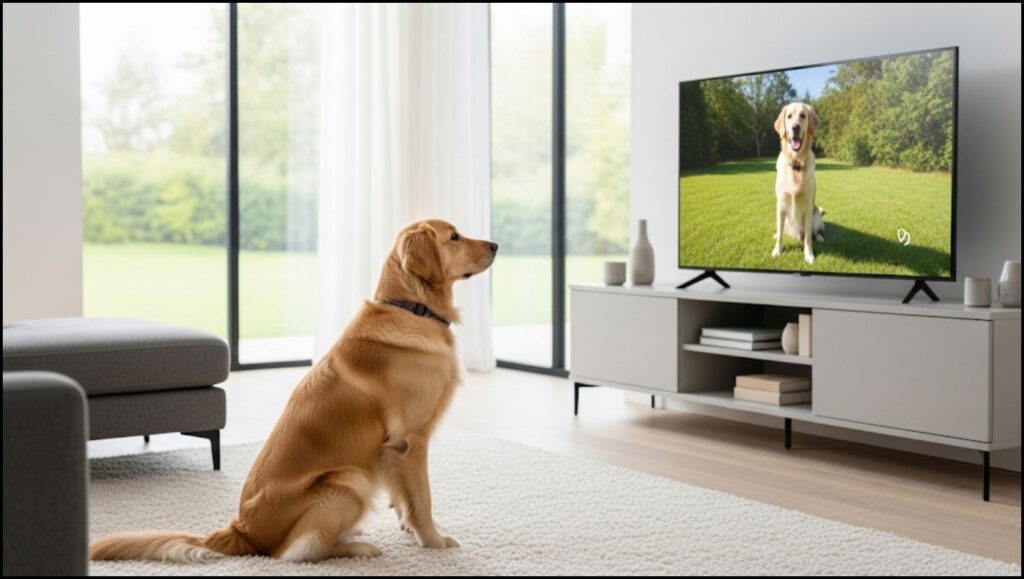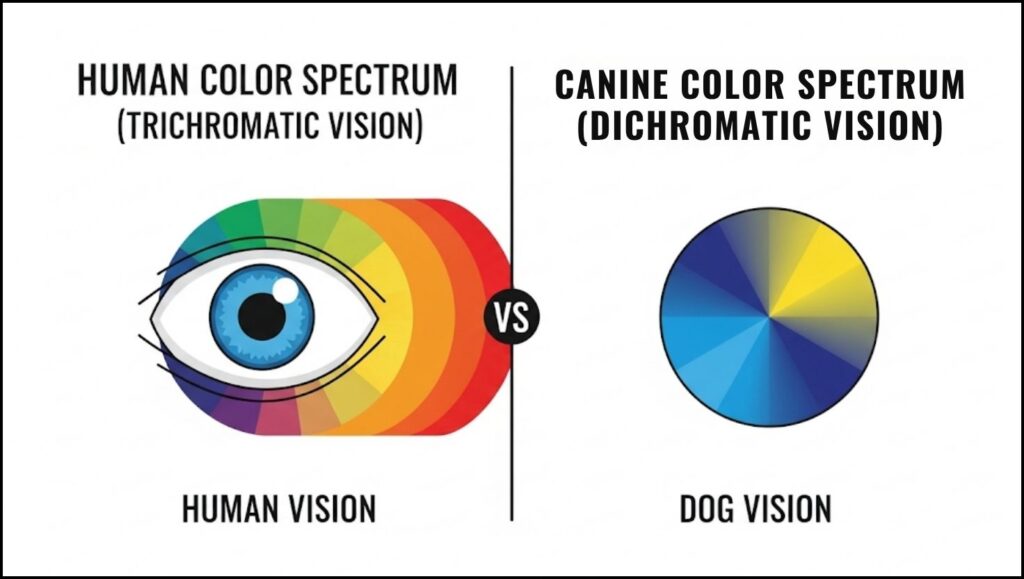
An increasing number of pet owners report their dogs watch, and even react to, television. This common household observation has spurred scientific inquiry into what is happening inside the minds of these animals. Researchers are now using this seemingly simple behavior to better understand canine cognition, revealing that a dog’s engagement with a screen is shaped by a unique sensory world far different from our own.
For many dogs, a television is more than just a flickering box of light. What they see, what they hear, and how they react provides a window into their individual personalities and biological instincts. Their on-screen preferences are now informing a deeper understanding of dog behavior and the evolving field of canine enrichment.
How a Dog Sees the World on a Screen
A dog’s perception of television is fundamentally dictated by its distinct visual and auditory systems. What appears as a seamless moving picture to a human may be a completely different experience for a canine viewer, a fact rooted in biology.
One of the most significant differences is the flicker fusion frequency—the speed at which a series of still images must be presented to be perceived as continuous motion. Dogs have a higher flicker fusion rate than humans, at around 75 hertz (Hz) compared to our 50-60 Hz. This means older, standard-definition televisions with lower refresh rates likely appeared to dogs as a strobing, unpleasant flicker, according to a report from the American Kennel Club (AKC). However, modern high-definition televisions with higher refresh rates (100 Hz and above) present a much smoother and more visually appealing image for dogs.

Color perception is another key difference. Humans have three types of color-detecting cone cells in their eyes (trichromatic), allowing us to see a full spectrum of reds, greens, and blues. Dogs have only two types of cones (dichromatic), similar to a person with red-green color blindness. Their world is primarily composed of blues, yellows, and shades of gray.
“What we’ve learned from research is that a dog’s-eye view of the world is a lot less colorful than ours,” said Dr. Freya Mowat, a veterinary ophthalmologist at the University of Wisconsin-Madison, in a university publication. “It is also a bit blurrier.” This means that high-contrast images and programming that emphasizes the blue-yellow spectrum are more visually stimulating for dogs.
Content, Personality, and Canine Cognition
While technology explains how dogs can watch TV, it is the content that determines if they will. Studies show that dogs are not passive viewers; they are most engaged by specific sights and sounds.
A 2017 study published in the journal Animal Cognition found that dogs showed a significant preference for watching other dogs on screen. The movements and social cues of their own species are far more captivating than most human-centric programming.
The Power of Sound
For many dogs, audio cues are more important than visuals. Their hearing is far more sensitive than a human’s, capable of detecting a wider range of frequencies.
“Sounds like barking, whining, commands from owners, and the squeak of a toy are highly effective at grabbing a dog’s attention,” states Dr. Nicholas Dodman, a renowned animal behaviorist and professor emeritus at Tufts University’s Cummings School of Veterinary Medicine, in his writings on the subject. This is why a dog might suddenly run to the television when it hears a doorbell or a bark, even if it was previously ignoring the screen.
Breed and Personality Traits
A dog’s interest in television is also heavily influenced by its breed and individual temperament.
- Sight Hounds and Herding Breeds: Dogs bred for keen eyesight and tracking movement, such as Greyhounds and Border Collies, are often more likely to be visually stimulated by action on a screen.
- Scent Hounds: Breeds that rely more heavily on their sense of smell, like Beagles and Basset Hounds, may show significantly less interest in a purely visual medium.
An individual dog’s personality also plays a critical role. A confident, curious dog might see the screen as a source of entertainment, while an anxious or reactive dog might become stressed or agitated by images of other animals or loud noises.
Is TV a Tool for Canine Enrichment?
As understanding of dog behavior grows, so does the market for products designed for them. Subscription services like DOGTV offer programming specifically developed with canine senses in mind, using colors, sounds, and camera angles tailored to their perception. The goal is to provide mental stimulation, a key component of canine enrichment.
Experts agree that such programming can be a useful tool to alleviate boredom or separation anxiety for dogs left home alone. However, they caution that it should never be a replacement for real-world interaction. “Television can be a part of an enrichment plan, but it cannot be the whole plan,” said Dr. Mary Burch, a certified applied animal behaviorist with the AKC. “Dogs are social animals. They still need walks, playtime, and direct interaction with their human families to thrive.”
Ultimately, the phenomenon of dogs watching television serves as a powerful reminder of their complex inner lives. While they may not be following intricate plots, their reactions to the screen offer valuable clues about what they find stimulating, what makes them anxious, and how we can continue to improve their quality of life. Future research in canine cognition will likely continue to explore how technology can bridge the communication gap between humans and their oldest companions.
